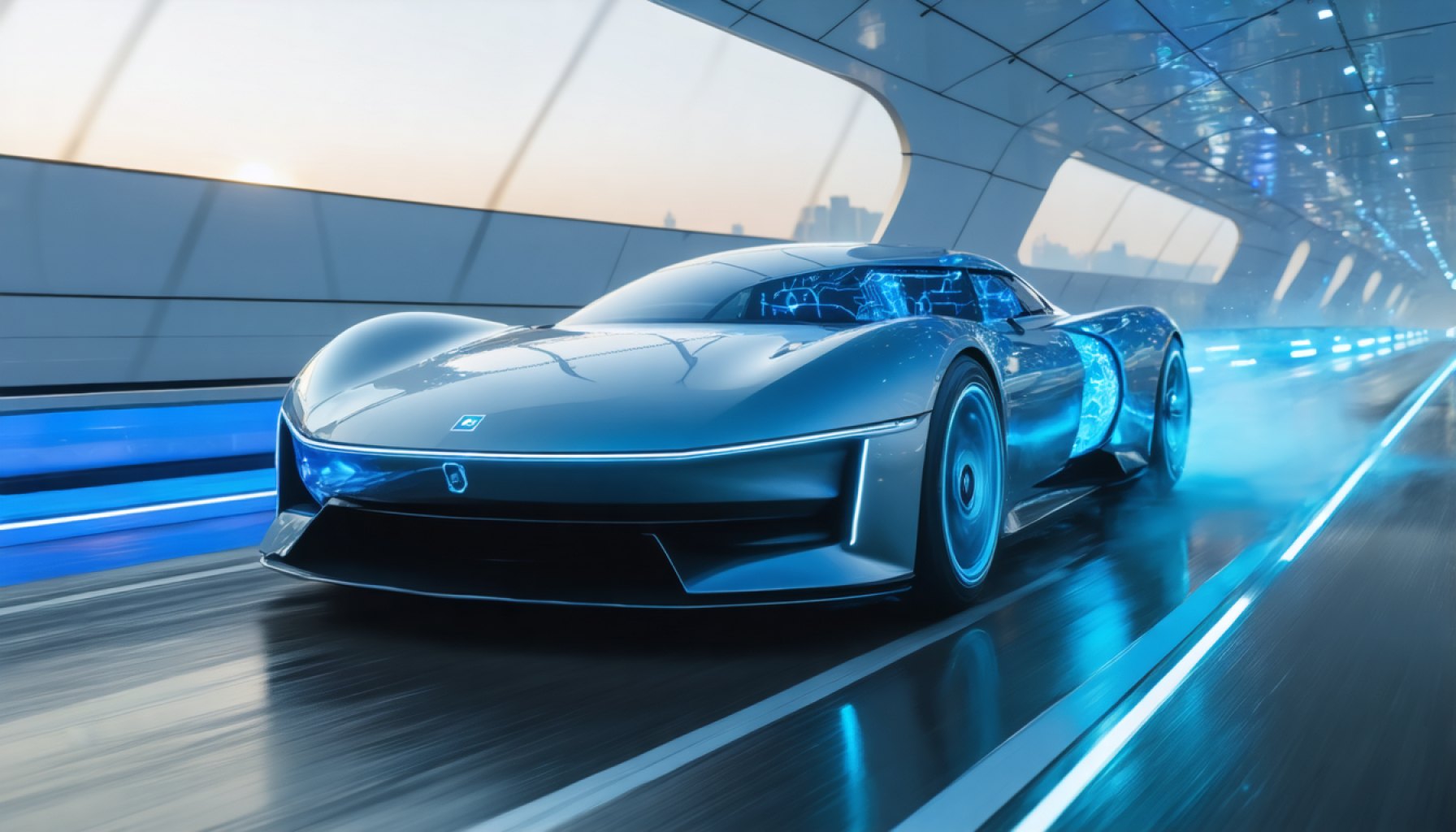
- CATL, a global leader in battery manufacturing, has announced major advancements in electric vehicle (E.V.) technology.
- Innovations include lighter designs, rapid charging, enhanced cold-weather resistance, and extended range—all aimed at reducing costs and improving performance.
- The new battery technology features auxiliary batteries integrated within the car’s underbody, maximizing energy storage while challenging current E.V. structures.
- These advancements promise to make E.V.s a formidable competitor to gasoline-powered vehicles in efficiency and appeal.
- CATL’s developments have the potential to transform the E.V. economic landscape and may inspire significant industry changes toward sustainability.
- While taking years to implement, these innovations could redefine electric vehicles as preferred consumer choices, inching closer to a zero-emission future.
- Speculation arises around CATL potentially launching its own vehicle brand, possibly overshadowing established automakers.
Shattering longstanding barriers in electric vehicle (E.V.) technology, CATL—the global titan of battery manufacturing—announced sweeping advancements that promise to accelerate the mainstream adoption of electric cars. With gasoline engines still setting the benchmark for range and convenience, the company’s innovations signal a new era where E.V.s might finally turn the tide.
At a dynamic event, reminiscent of the grand spectacle of auto shows, CATL unveiled these breakthroughs with the electrifying promise of transforming the electric vehicle landscape. The anticipated evolution in battery technology offers a tantalizing mix of features: dramatically lighter designs, rapid charging capabilities, superior cold-weather resistance, and above all, extended range, all poised to slash costs and amplify performance.
With roots stretching deep into the fabric of E.V. progress, CATL has already carved its name by producing a staggering one-third of global E.V. batteries, partnering with automotive giants like Tesla and General Motors. Yet, the company’s recent revelations indicate a bold step toward redefining the entire power paradigm of electric vehicles.
The innovations came with a twist: a novel approach involving auxiliary batteries that integrate within the car’s underbody. This space-efficient design not only maximizes energy storage but challenges the fundamental engineering of current E.V. structures. Such ingenuity could bridge the remaining gap between electric and petrol-powered cars, making the former a formidable competitor in both efficiency and appeal.
In a market where battery costs consume a significant portion of E.V. production budgets, CATL’s developments are poised to pivot the economic landscape. Loyal to a mission of sustainability and innovation, their forward-looking strategies may soon inspire a renaissance in E.V. manufacturing, where zero-emission vehicles become not just viable alternatives, but preferred choices for consumers worldwide.
While these technologies will take a few years to appear in cars rolling off the assembly lines, the implications are profound. Industry experts watch closely, some with apprehension, speculating whether CATL will leverage its innovations to launch its own vehicle brand, potentially overshadowing established carmakers.
The unfolding battery saga mirrors the dawn of a new epoch, where visionary energy solutions light the way to a sustainable future. As CATL charts a daring course, the quest for cleaner skies and quieter roads nudges closer to reality. The road ahead may still hold challenges, but with every kilowatt-hour, the dream of an electric world accelerates into view.
Revolutionizing the Future: CATL’s Breakthrough in Electric Vehicle Batteries
Key Insights into CATL’s Battery Innovation
CATL’s latest announcements have significant implications across the automotive and energy industries, promising to reshape the electronic vehicle (E.V.) landscape. Here are several lesser-discussed but crucial aspects.
1. Technological Specifics of CATL’s Batteries
– The new batteries boast a higher energy density, a critical factor that could extend vehicle range and reduce overall weight. This makes E.V.s more competitive against traditional gasoline engines.
– Rapid charging capabilities are improved not only to reduce downtime for users but also by increasing the practicality of E.V.s for long-distance travel.
2. Potential Market Disruption
– CATL’s advances could substantially lower battery costs, which remain a major component of E.V. expenses. This cost savings may lead to more affordable E.V. options for consumers, broadening market accessibility.
– With the inclusion of ancillary batteries integrated into a vehicle’s underbody, space utilization and overall vehicle design paradigms are expected to shift, prompting automakers to rethink their strategies and potentially leading to more innovative vehicle designs.
3. Environmental and Economic Implications
– CATL’s focus on sustainability not only aligns with global efforts to reduce emissions but also positions the company as a leader in responsible manufacturing practices. This could appeal to growing segments of eco-conscious consumers.
4. Competitive Landscape
– As CATL strengthens its partnership with major automotive companies like Tesla and General Motors, questions arise about whether CATL will leverage its technological prowess to create its own vehicle brand, which could threaten other automakers.
– The risk of reliance on a single battery supplier may spur automakers to diversify their supply chains, bolstering competition and innovation in battery tech.
Possible Challenges and Limitations
1. Dependence on Raw Materials
– As with any battery technology, dependence on critical raw materials like lithium and cobalt could pose supply chain risks and ethical concerns related to mining practices.
2. Market Adoption
– Despite technological advancements, widespread market adoption depends on the development of charging infrastructure and consumer acceptance, which may take time to mature.
Actionable Recommendations
– Monitor Market Trends: Consumers and investors should keep an eye on developments in E.V. technology and infrastructure to make informed decisions about vehicle purchases or investments.
– Embrace Innovation: Automotive manufacturers should consider integrating CATL’s modular battery solutions to stay competitive and align with future trends.
– Sustainability Considerations: Companies should ensure their practices align with sustainability goals to meet regulatory and consumer expectations.
Conclusion: The Road Ahead
CATL’s innovations signal a significant leap forward in electric vehicle technology, promising not just enhancements in performance but also pivotal shifts in market dynamics. As the industry moves towards a more sustainable future, key players will need to adapt to these changes to remain competitive.
Stay Informed
For more insights into energy solutions and the automotive industry, visit CATL and Tesla.



